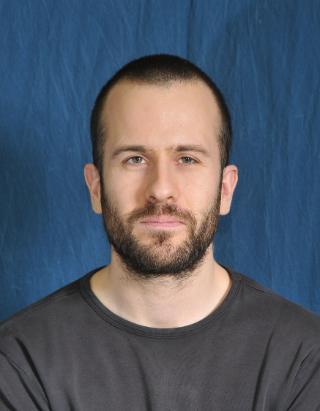Dr Juan Manuel Parrilla Gutierrez
Published: 20 November 2019
Bio-inspired robotics through Artificial Life

Dr Juan Manuel Parrilla Gutierrez
School of School of Chemistry
Type of fellowship LKAS
Area of research Bio-inspired robotics through Artificial Life
Why did you choose to pursue a fellowship in your research career?
The goal of every researcher is to become independent in order to pursue your own research questions, and a fellowship gives you exactly that. Therefore, as a research fellow you can fully focus on your own research, especially at the start of your independent career, and then hopefully this gives you a platform to obtain a permanent position.
My research aims to merge robotics and chemistry, and study how life appeared on planet Earth in order to replicate those processes from an engineering perspective and create new kinds of bio-inspired robots. As far as I know, no other researcher is doing anything close to this, thus the only way to pursue it is to become independent and start my own research group.
Why work at the University of Glasgow?
During my academic career I have studied or work in 3 different universities, spending the last 7 years at Glasgow first as a PhD student and then as a postdoc. From day one something I really liked is the network of support that exists around researchers and students, and the quantity of different workshops, courses and advisors that are here to help develop ourselves first as a students’ and then as a researcher.
Becoming an independent researcher is very exciting, but it can also be very stressful because suddenly you lose the established network of your PI. Based on my previous experience, I thought that Glasgow would have my back, allowing me to fully focus on research without stressing too much about everything else.
How would you describe your research in 20 words or less?
My research aims to create a new generation of bio-inspired robots by studying the processes that created life on Earth.
What is your research highlight?
My research highlight is the paper I published in Nature Communications in 2014, which was the culmination of 5 years of work. This paper was interesting for 2 things:
1) It described the first (to my knowledge) fully functional robot built using a 3D-printer and DIY software and hardware. This robot could execute thousands of experiments working 24/7, and it also showed a closed-loop approach to data science, where the platform could decide which experiments to do, execute them, analyse the results, and decide again. All these was implemented into a single robot using AI, Computer Vision, 3D-printing and DIY projects like Arduino.
2) The scientific output of this robot was to show that simple oil droplets could undergo an evolutionary process. Again, to my knowledge, it is the first time this has been proved. This is important because we know that to be alive a cell needs three components: information molecules such as DNA, mechanism molecules such as proteins, and an encapsulation or body. How these three components came together into a cell is a very big question not answered yet, but my research showed that simple oil droplets (simple bodies) could undergo evolution in order to acquire more complex behaviours without the need for proteins or RNA/DNA.
What do you look for in a collaboration?
The main thing I look for in a collaboration is to learn from my partners, and also to teach them about what I do. Since my main background is in Computer Science and Robotics, but most of my research is in Chemistry, this means that collaborations are critical to my research because I need to fill that knowledge gap in order to do science. And that is why learning from collaborations is so important, in order to try to decrease that gap.
How do you see your research impacting society?
Current electronic robots are very energy and materials intensive. Bio-inspired robots aim to solve this by embodying features from biology. My research aims to create bio-inspired robots from the bottom-up, to create a new paradigm of robotics by trying to engineer multi-cellular organisms – not from a synthetic biology point of view, but purely from an engineering perspective. A side product of my research is the development of technologies to enable this. My focus is on 3D-printing, AI and Computer Vision, and in particular how to create closed loops between these technologies. This could be applied to, for example, autonomous manufacturing.
What next?
One of the main challenges that I am facing just now starting my fellowship is the transition from a large research group, to a small research group where I am the only member. I am solving this by doing all my calculations in-silico, instead of performing real experiments. This requires the creation of models that can simulate the parts of chemistry I need to do my research. My next step will be to go back to the lab and perform real experiments to test my hypothesis. The end goal is to create a new paradigm of robotics and start such a field within the University of Glasgow.
First published: 20 November 2019

